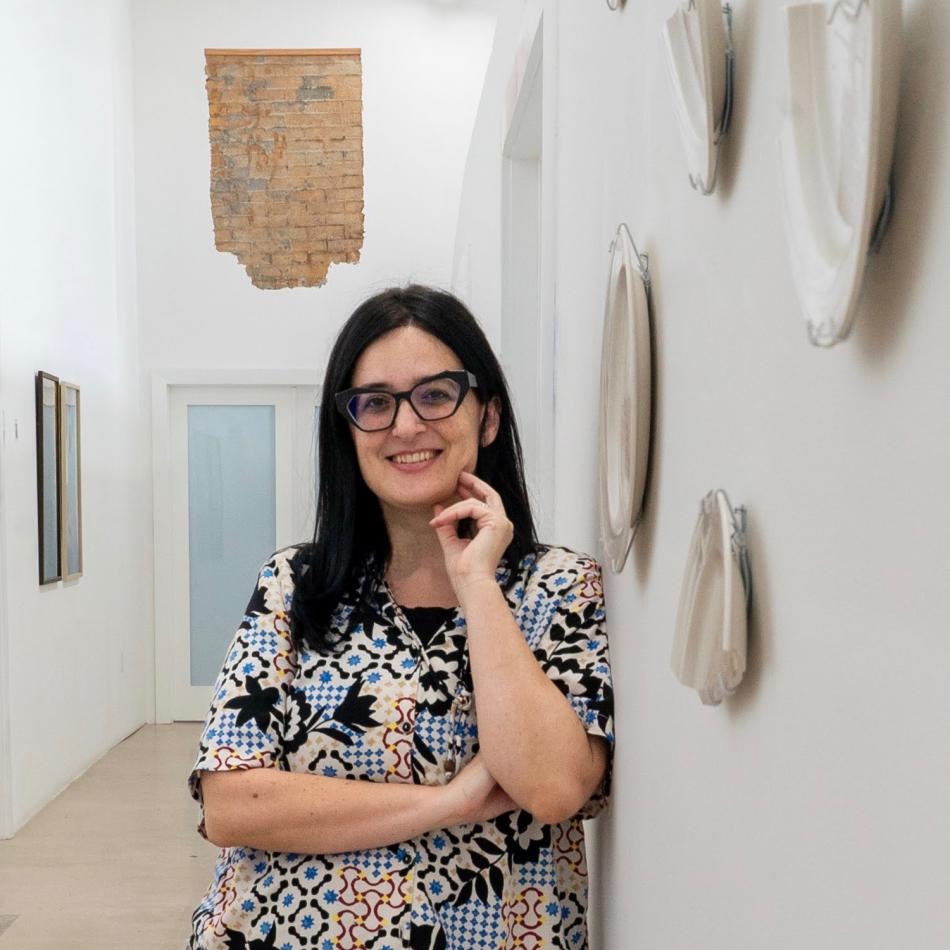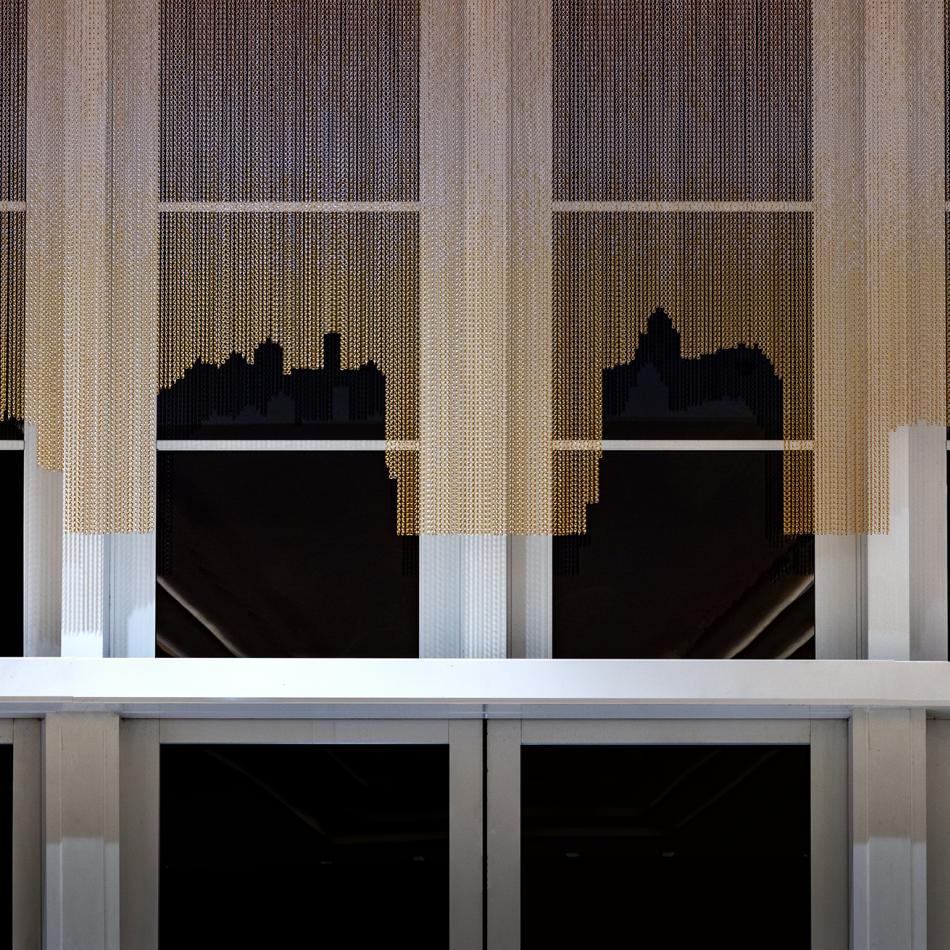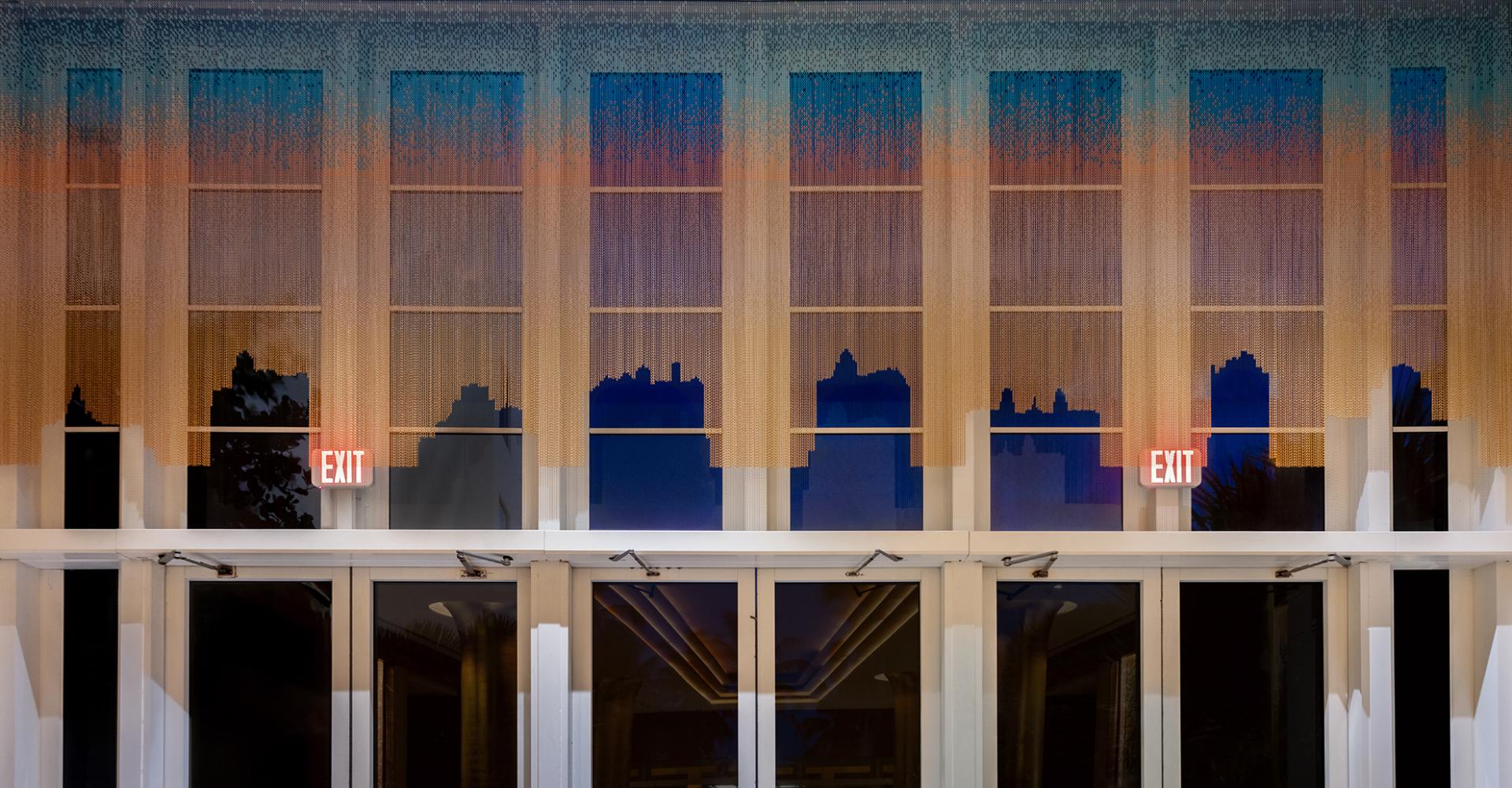BEFORE MIAMI DESIGN PRESERVATION LEAGUE
—LIENE BOSQUÊ
FAENA ART IN SUPPORT OF NO VACANCY, A PROGRAM OF THE CITY OF MIAMI BEACH AND THE MIAMI BEACH VISITOR AND CONVENTION AUTHORITY
The importance of preservation has become increasingly apparent to us as a society —in large metropolises like Miami where new towering structures are changing the skyline daily, we forget the past architectural gems that once defined an area. ‘Before Miami Design Preservation League’, a twenty-four-foot-long work by Liene Bosquê hangs over the Path of the Warrior, serving as a testament to the bygone architectural landmarks of Miami Beach. A suspended aluminum curtain of gracefully hanging chains in soft golden oranges, light pinks, into blues reminiscent of the watercolor-like skies of South Florida at sunset, Liene delicately traces the elegant and unique contours of Art Deco, Mediterranean Revival, and Miami Modern architectural styles. These forms, now the focus of tireless preservation efforts, emerge as poignant reminders of the city’s rich history and architectural heritage. The formation of the Miami Design Preservation League, a vital organization established in 1976, has since been committed to safeguarding and building awareness of the historical and architectural legacy of Miami Beach. As a Miami transplant and a trained architect, Liene was immediately confronted with the historical essence and importance of these architectural elements.
Through exhaustive research she found archival photographs and books about these lost buildings and preserved them through silhouettes in this work. Bosque not only hopes for Miami Beach to serve as an example, but she envisions the emulation of this legacy-preserving model in other cities, now more than ever. As the concrete jungle continues to expand around us, she questions the ecological and environmental impacts of this destruction and reconstruction. How does the disposability of these buildings reflect our position in society, how do we reach a point where we feel entitled to erase the past? Now, thanks to the efforts of the Miami Design Preservation League, areas like Ocean Drive have become a recognized destination for tourists, students, and architects to immerse themselves in the classic pastel structures iconic to the Art Deco movement.

ABOUT THE ARTIST
Liene Bosque (b. Brazil) is an MFA graduate from the School of the Art Institute of Chicago as well as BFA graduate from the São Paulo State University. Bosquê’s installations, sculptures, site-specific projects, as well as her socially engaged practice works have been exhibited in museums and galleries throughout the United States; at MoMA PS1 in New York, Frost Art Museum in Miami, Museum of Contemporary Photography in Chicago, among other institutions.
ABOUT NO VACANCY
A City of Miami Beach project in collaboration with the Miami Beach Visitor and Convention Authority (MBVCA), No Vacancy is a contemporary art happening that celebrates artists, provokes critical discourse, and invites the public to experience Miami Beach’s famed hotels as destination art spaces and temporary galleries. The installations are on view from November 16 through December 14, 2023.
No Vacancy is made possible with the support of The City of Miami Beach, The Miami Beach Visitor and Convention Authority, and The Greater Miami Convention & Visitors Bureau.

ABOUT NO VACANCY
No Vacancy is a contemporary art experience, presented by The City of Miami Beach, in collaboration with the Miami Beach Visitor and Convention Authority (MBVCA) that celebrates artists, provokes critical discourse, and invites the public to experience Miami Beach’s famed hotels as destination art spaces. Art will be exhibited throughout twelve hotels in Miami Beach– lobbies, restaurants, lounges, patio areas, rooms, balconies, and swimming pools may serve as the canvas. No Vacancy is committed to providing art experiences that are accessible to everyone, free and open to the public and as well as reinventing Cultural Tourism in Miami Beach, by turning hotels into temporary cultural institutions.
